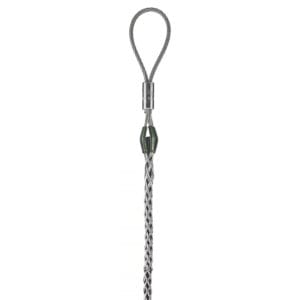Safety is our number one priority and we are certain when you are on the job, that is what your top priority is as well. Safety is critical when dealing with utility construction / maintenance projects, and one of the main ways to ensure safety is by working within the load limits of crucial equipment.
What is Factor of Safety?
This factor used to ensure sufficient break load to handle working load spikes. It is critically important that all devices and tools used for pulling conductor are rated for the working loads expected on each job. Working Load (WL) is determined by the project engineer or designer.- Factor of Safety (FOS) is often notated as X to 1 or X:1
How do you determine Break Load?
This factor used to ensure sufficient break load to handle working load spikes.
It is critically important that all devices and tools used for pulling conductor are rated for the working loads expected on each job. Working Load (WL) is determined by the project engineer or designer.
- Factor of Safety (FOS) is often notated as X to 1 or X:1
Factor of Safety is the ‘extra’ coverage of the breaking load over the working load expected. When pulling conductor or cable, many factors impact how much load your equipment must handle.
Sometimes the conductor can get hung up on something which will cause the load tension to spike. The factor of safety helps accommodate a normal spike without dropping wire or experiencing equipment failure.
- Working Load requirement is set by project
- Break Load must Equal or Exceed: WL X FOS (Working Load x Factor Of Safety)
- A FOS of 5 to 1 is commonly accepted in the US for overhead line pulls. Different countries may have a different standard.
VIEW RELATED PRODUCTS
-

Ball Bearing Swivel
$0.00 View Product This product has multiple variants. The options may be chosen on the product page -

Extension Arm (Hot Arm) – 3″x6′
View Product -

Kellems® Multiple Strength Pulling Grip with Flexible Eye
$0.00 View Product This product has multiple variants. The options may be chosen on the product page -

Strap Hoist
View Product








